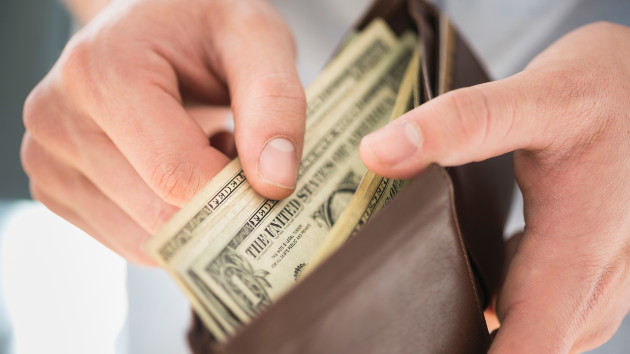
(NEW YORK) — Inflation data released on Wednesday revealed that price increases slowed in July, easing the strain on household budgets as the Federal Reserve fights inflation with a series of borrowing cost hikes that in theory should slow down the economy, slash demand and cut prices.
While still elevated, price hikes waned from the near-historic pace reached in June, giving hope to policymakers and consumers that inflation has peaked.
The consumer price index, or CPI, rose 8.5% year-over-year in July, a marked slowdown from 9.1% in June, according to the Bureau of Labor Statistics.
On a monthly basis, the consumer price index rose 1.3% in July, remaining unchanged from the rise seen in June, according to the bureau.
The inflation data arrives as other indicators have sent mixed signals about the the economy in recent weeks.
A slowdown in the inflation rate emerged in part because the national average price of gasoline, which makes up a key portion of the consumer price index, has declined for more than 50 consecutive days, according to AAA.
Meanwhile, a government report on Friday revealed that hiring in July more than doubled economists’ expectations, defying Fed efforts to slow the economy and rebuking fears of a recession.
The significant uptick in hiring last month — an added 528,000 jobs and unemployment rate drop to 3.5% — came alongside elevated wage increases that may put upward pressure on consumer prices.
The heightened wage increases match a pattern that stretches back months. A closely observed measure of U.S. wages, called unit-labor costs, rose 9.5% over the second quarter of this year, the fastest rise of that metric since the first quarter of 1982, according to data released by the federal government on Tuesday.
When facing high inflation, policymakers fear what’s referred to as a price-wage spiral, in which a rise in prices prompts workers to demand raises that help them afford goods, which in turn pushes up prices, leading to a self-perpetuating cycle of runaway inflation.
The Fed has sought to avoid a price-wage spiral with a series of borrowing cost increases, Maurice Obstfeld, a professor of economics at the University of California, Berkeley, told ABC News. At meetings in each of the past two months, the central bank has increased its benchmark interest rate 0.75% — dramatic hikes last matched in 1994.
“The data is telling us not that rate hikes have been ineffective but that the Fed will have to go quite a bit further,” Obstfeld said.
However, other data suggests that inflation fears have waned significantly.
A survey released by the New York Federal Reserve on Monday showed that consumers expect inflation to slow down.
Individuals who responded to the July survey said they expect inflation to run at a 6.2% pace over the next year and a 3.2% rate for the next three years, both of which marked significant declines from the inflation expectations expressed by consumers in the month prior.
Copyright © 2022, ABC Audio. All rights reserved.
